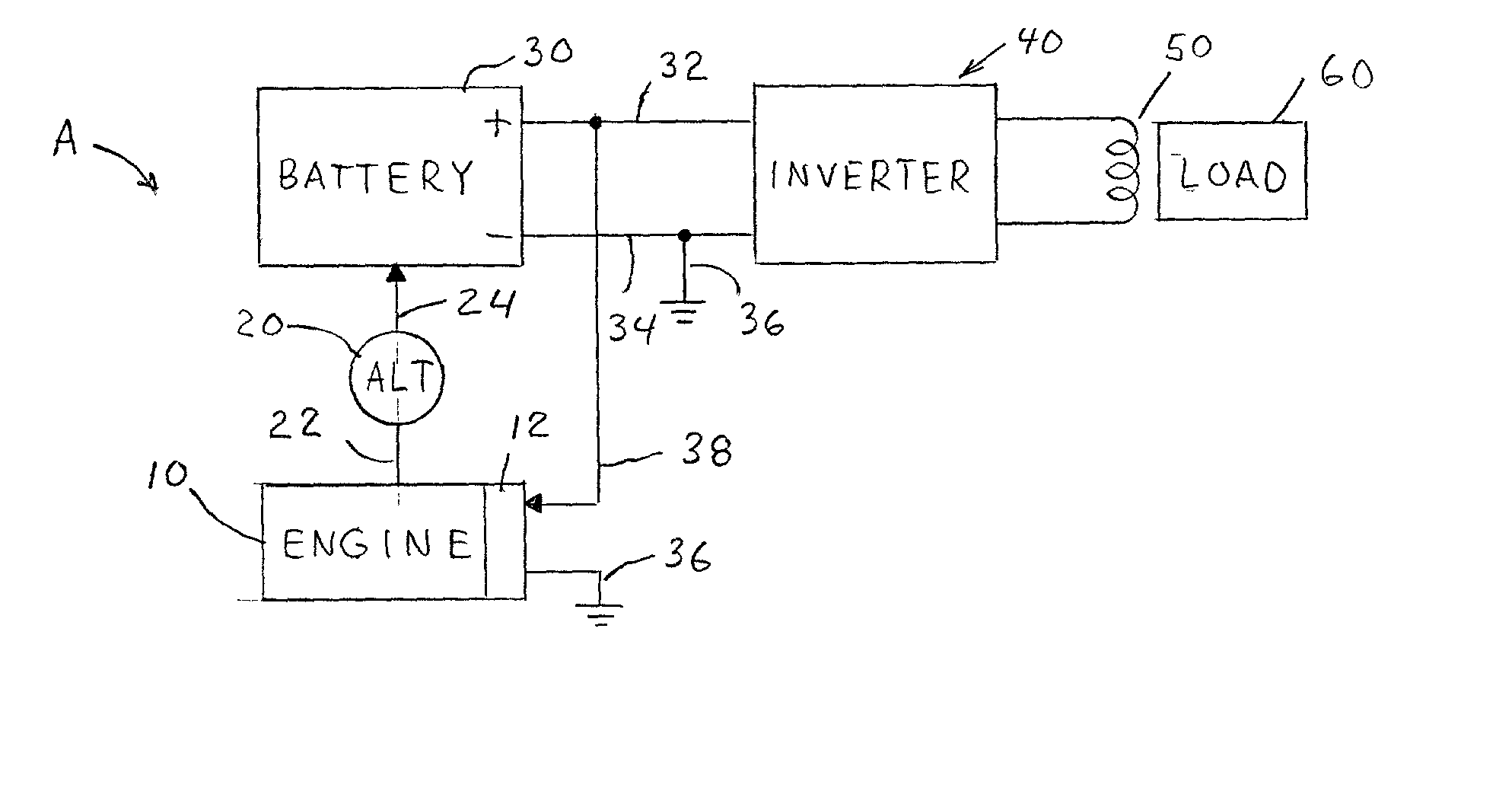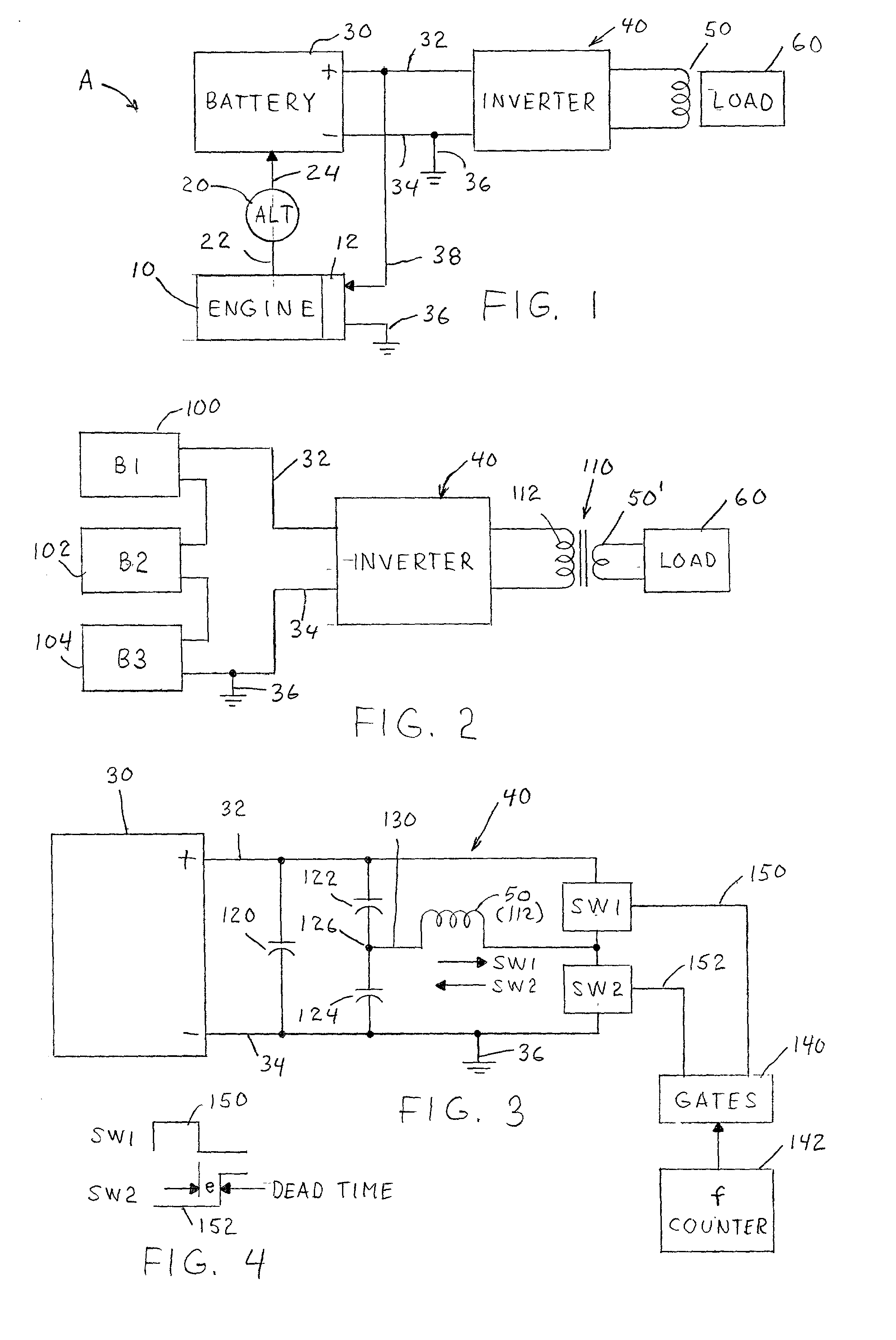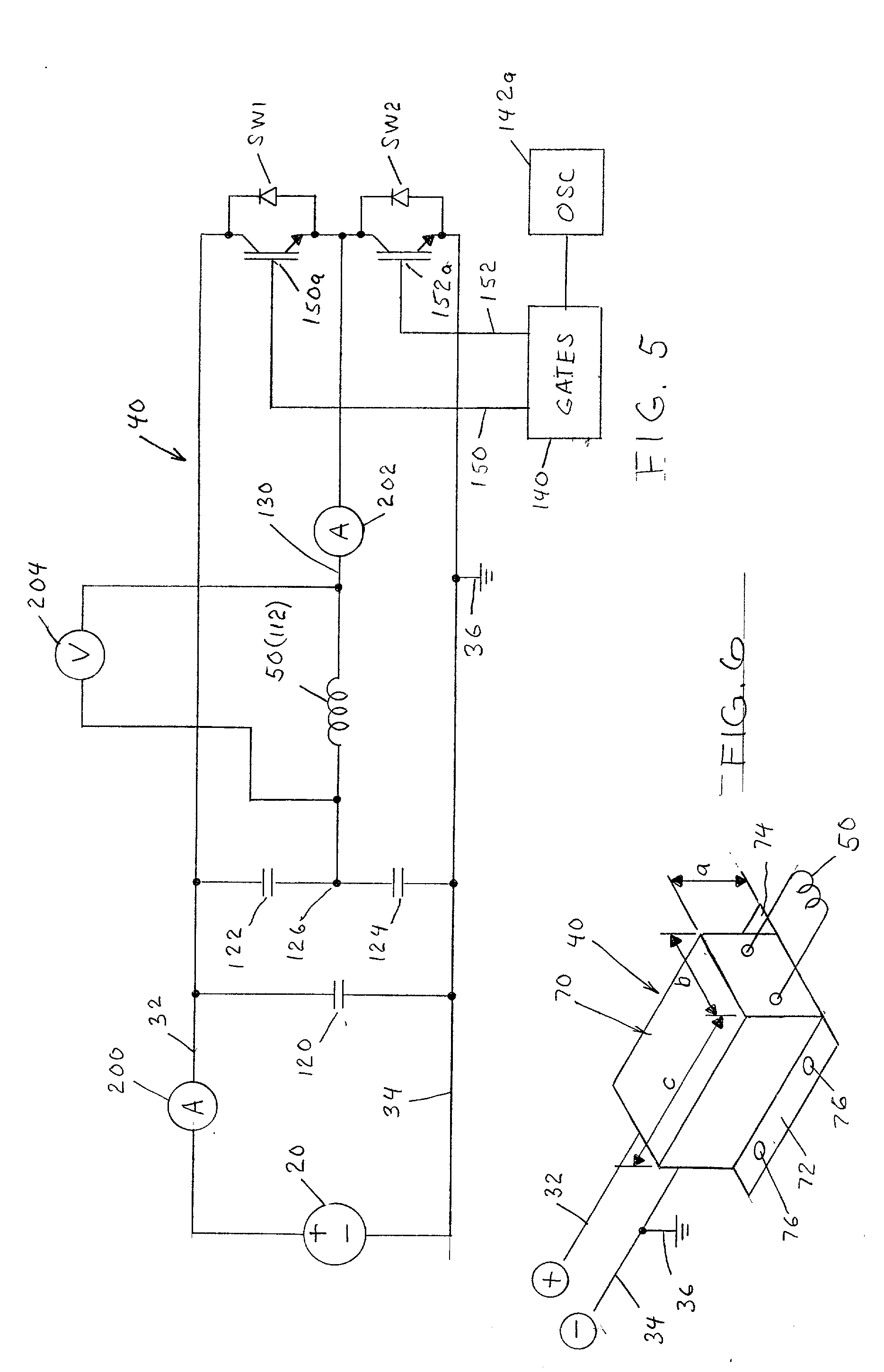Induction heating system
- Summary
- Abstract
- Description
- Claims
- Application Information
AI Technical Summary
Benefits of technology
Problems solved by technology
Method used
Image
Examples
Embodiment Construction
[0020] Referring now to the drawings wherein the showings are for the purpose of illustrating preferred embodiments of the present invention and not for the purpose of limiting the same, FIG. 1 shows an induction heating system as constructed in accordance with the present invention and used with an internal combustion engine 10 having a standard condition system 12 whereby alternator 20 is driven by shafts 22 during operation of engine 10. In practice, the output voltage in line 24 is 12 volts DC for storing electrical energy in battery 30 to produce a clean DC current between leads 32, 34. In accordance with standard practice, the negative lead 34 is grounded at terminal 36. By this architecture, the ignition system is powered by a clean DC current directed to ignition system 12 by lead 38 connected to positive lead 32. A novel high frequency inverter 40, the details of which will be explained later, produces high frequency currents to an induction heating coil 50 for inducing a v...
PUM
 Login to View More
Login to View More Abstract
Description
Claims
Application Information
 Login to View More
Login to View More - R&D
- Intellectual Property
- Life Sciences
- Materials
- Tech Scout
- Unparalleled Data Quality
- Higher Quality Content
- 60% Fewer Hallucinations
Browse by: Latest US Patents, China's latest patents, Technical Efficacy Thesaurus, Application Domain, Technology Topic, Popular Technical Reports.
© 2025 PatSnap. All rights reserved.Legal|Privacy policy|Modern Slavery Act Transparency Statement|Sitemap|About US| Contact US: help@patsnap.com



